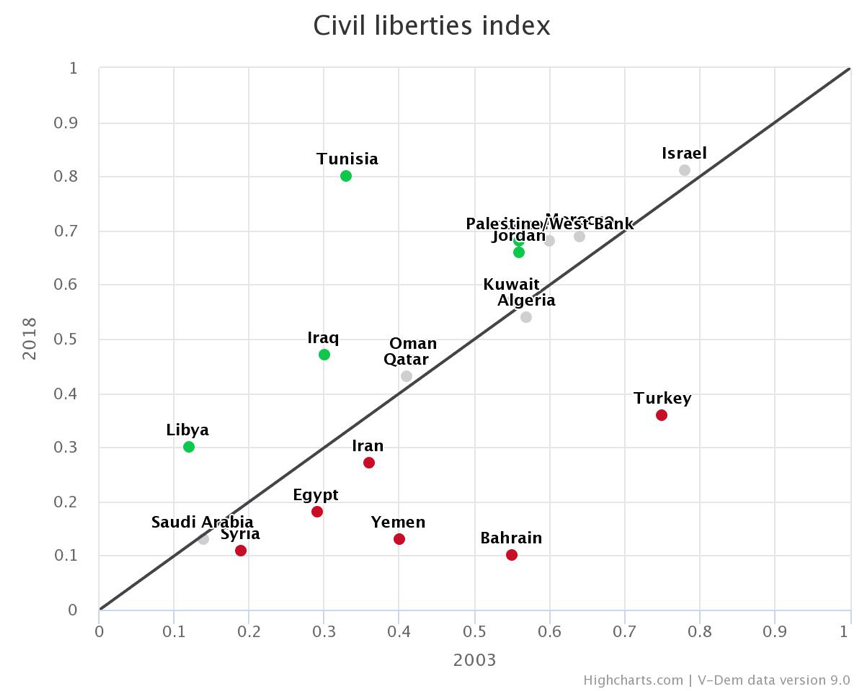Civil Liberties in the MENA Region
By: V-Dem Staff
Apr 23, 2019
The past decade has been chaotic for the countries of the Middle East and North Africa (MENA). According to V-Dem data, the region scores the lowest in terms of civil liberties in the world.
The Arab Spring of 2011, brought about extensive political changes within the MENA region. However, demands for democratic reforms have only resulted in one democratic outcome - Tunisia. The aftermath of the uprising resulted in political turmoil in most countries and civil wars in Libya, Syria and Yemen. The radical jihadist militant group, the Islamic State (IS) has been successfully pushed back in the region. However, its actions have devastated civilian populations. Today the region is characterized by failed states and abortive regime transitions. The majority of the citizens live under autocratic rule with very limited civil liberties.
V-Dem’s Regional Comparison Chart, illustrates the development of civil liberties in the MENA-region by comparing the situation in 2003 and 2018. The civil liberties index measures respect for civil liberties. It is measured on a scale of 0 to 1 where 0 indicates weak protection of individual and political rights. Countries on or close to the line have changed little between two years on the axes. Countries above the line have experienced positive changes, while countries below the line have declined. The colors indicate: improvement (green), decline (red), no change (grey). According to the graph, we see democratic reforms in Tunisia have resulted in a higher level of civil liberties to 2003. Meanwhile Erdogan’s rule in Turkey has led to a decline in civil liberties in Turkey.
To learn more about V-Dem indices and tools, please visit v.dem.net.


